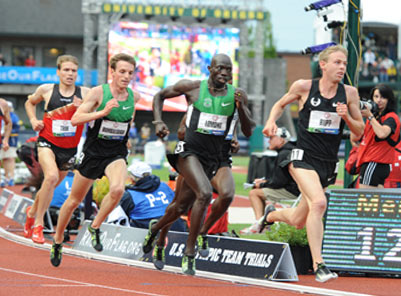If anyone knows about running biomechanics, it’s Eric Heins, NAU’s director of track and field and cross country. He’s won 10 Big Sky Coach of the Year awards. He’s trained three runners who will compete for three different countries in this summer’s Olympic Games in London. He’s won national championships. He lives and breathes running.
Before jetting off to London to watch the games in person, Heins offered some suggestions for those of us following the action from home. As you watch the track competitions, he suggests that you look for these indications of a runner’s efficiency:
- Mid-foot strike: “Good form is landing on the ball of the foot, right underneath the center of gravity,” Heins said. “When a runner starts to slow down, their foot is nearly out in front of the knee, landing on the heel.”
- Knee lift: This should be a 90-degree angle from hips to knee. “As fatigue sets in, the knee gets lower,” Heins said. “Watch an athlete’s knee lift early in the race and compare it with later.”
- Leg circle: “We teach our athletes that their trail leg should come back behind the hamstring with a high kick. The heel stays close to the hamstring, then comes down close to the opposite knee on the support leg. That’s a nice little circle, or close to it.”
If you watch enough of the race, Heins said, you can see these mechanics start to fall apart. The TV cameras might make such subtleties difficult to spot, but you can pick them up.



